Hi GPODers!
As promised yesterday, we’re back in Hingham, Massachusetts with Nancy Mellen to see more photos of her garden in spring and summer of last year. If you missed the first batch of garden highlights yesterday, be sure to check that out here: Part 1. Otherwise, keep scrolling to see more sensational blooms from the peak seasons in Nancy’s beautiful gardens.
Starting off with a close up of the ‘Hartlange Wine’ calycanthus (Calycanthus x raulstonii ‘Hartlage Wine’, Zone 5–9) we saw yesterday. What a gorgeous color!
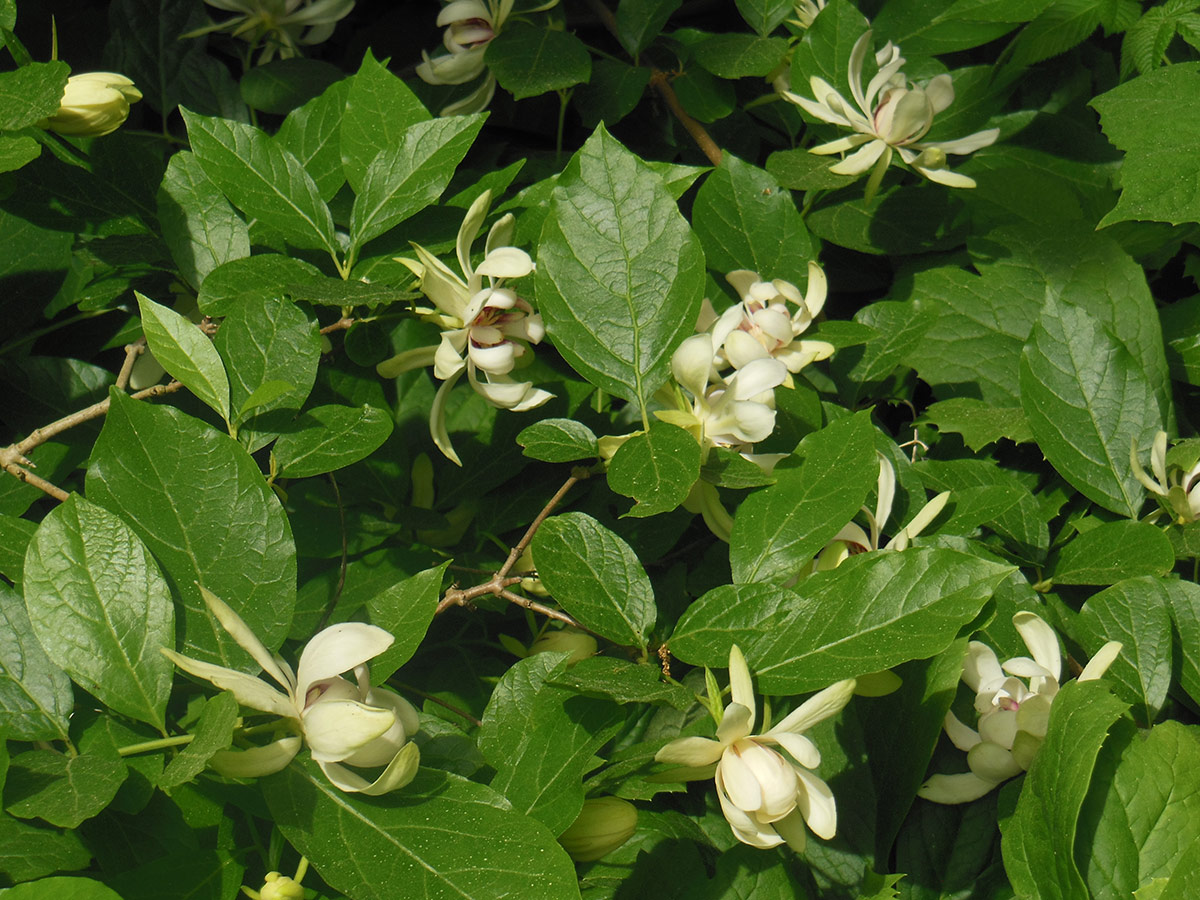 ‘Venus’ calycanthus (Calycanthus ‘Venus’, Zone 6–8) has creamy white flowers, but you can see from Nancy’s photo that some secret color is hidden in the center of these blooms. As these blooms continue to unfurl they reveal a deep, rosy centers.
‘Venus’ calycanthus (Calycanthus ‘Venus’, Zone 6–8) has creamy white flowers, but you can see from Nancy’s photo that some secret color is hidden in the center of these blooms. As these blooms continue to unfurl they reveal a deep, rosy centers.
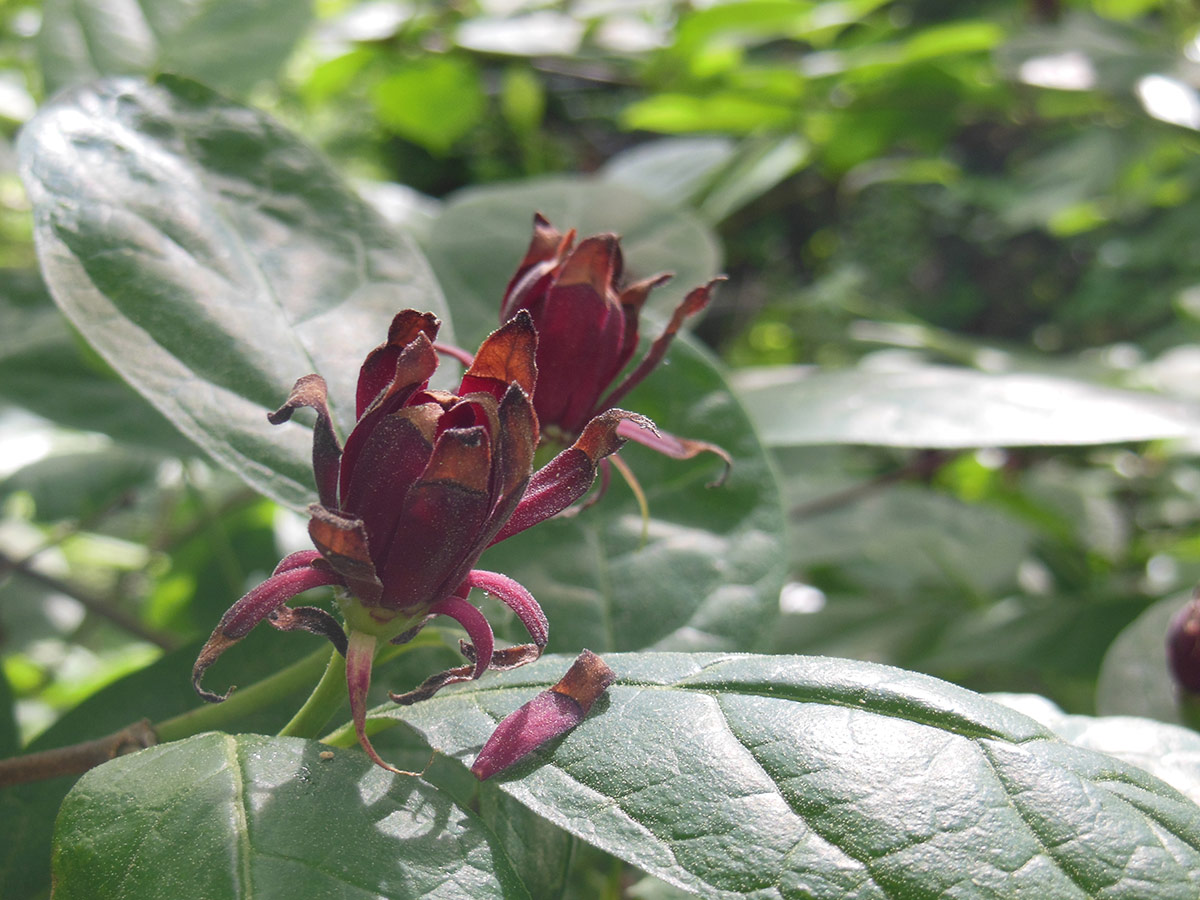 As we saw yesterday with her collection of incredible spring ephemerals, Nancy has several North American natives that produce beautiful blooms from spring through summer. This includes the native species of calycanthus (Calycanthus floridus, Zone 4–9), commonly called spicebush, eastern sweetshrub, or Carolina all spice.
As we saw yesterday with her collection of incredible spring ephemerals, Nancy has several North American natives that produce beautiful blooms from spring through summer. This includes the native species of calycanthus (Calycanthus floridus, Zone 4–9), commonly called spicebush, eastern sweetshrub, or Carolina all spice.
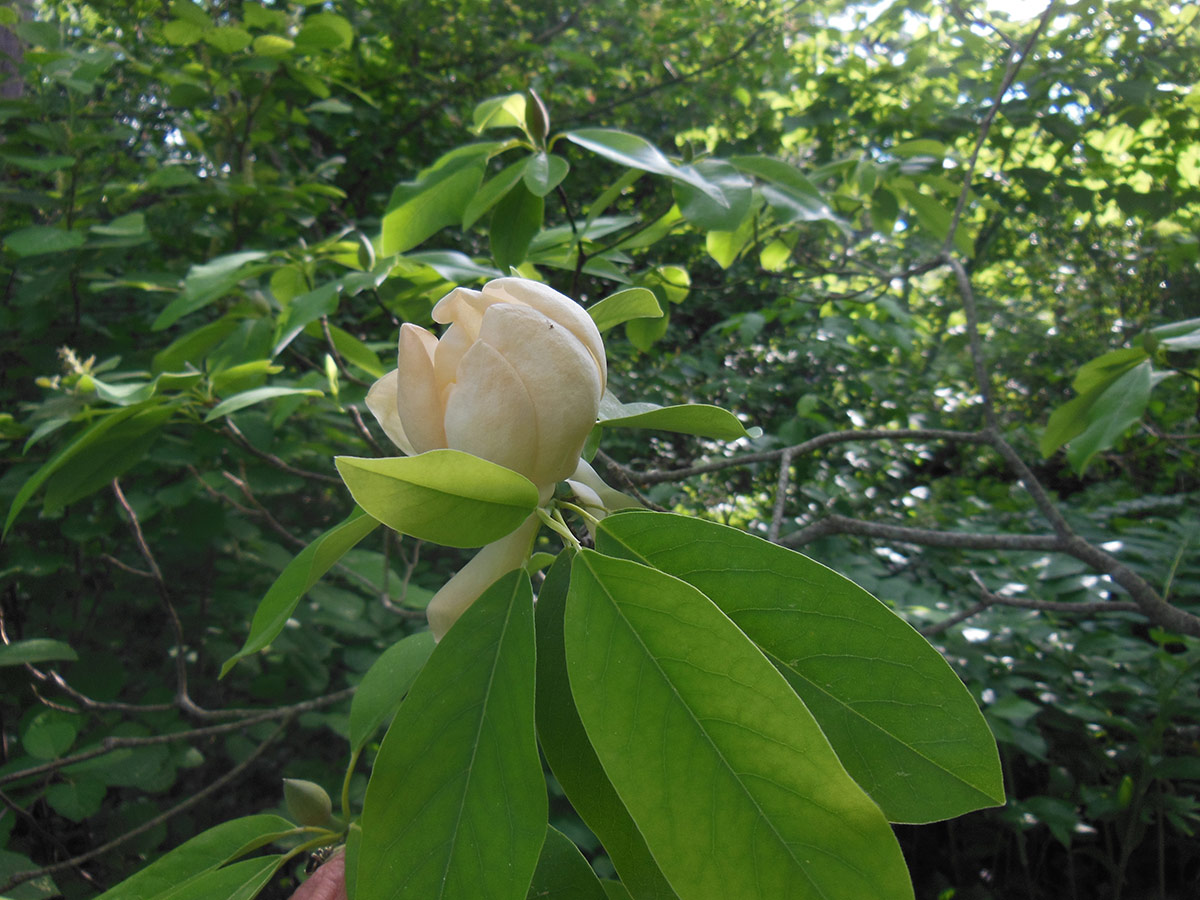 Another stellar woody native, sweetbay magnolia (Magnolia virginiana, Zone 5–10) often gets overshadowed by the bigger blooms of southern magnolia (M. grandiflora, Zone 6–10), so I’m happy to see Nancy giving it some love. Hardier than the southern magnolia, and with a usually much smaller footprint, this native tree is worthy of more attention.
Another stellar woody native, sweetbay magnolia (Magnolia virginiana, Zone 5–10) often gets overshadowed by the bigger blooms of southern magnolia (M. grandiflora, Zone 6–10), so I’m happy to see Nancy giving it some love. Hardier than the southern magnolia, and with a usually much smaller footprint, this native tree is worthy of more attention.
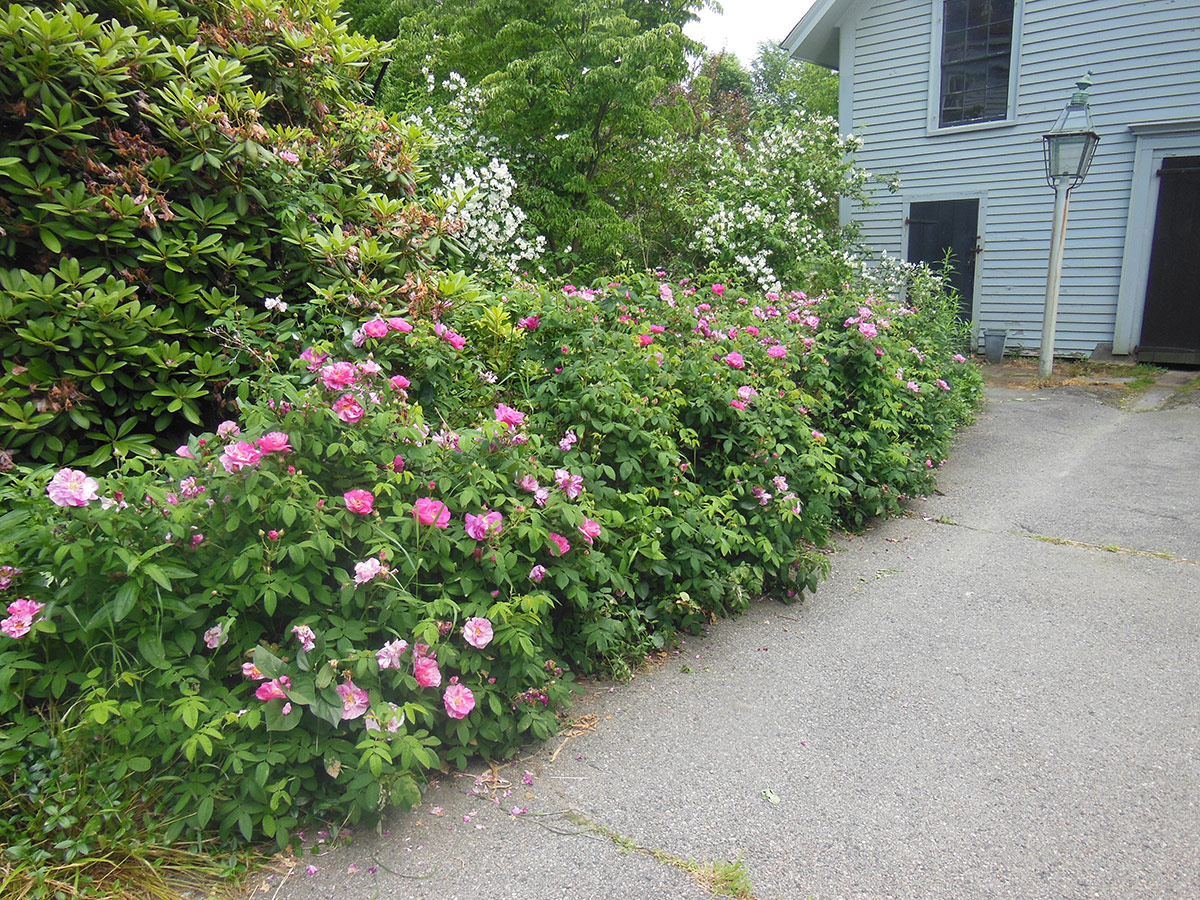 A lovely hedge of Rosa Mundi (Rosa gallica ‘Versicolor’, Zone 4–9) with rhododendron to left, two mock orange bushes (Philadelphus coronarius, Zone 4–8) in flower on the right, and with a Kousa dogwood (Cornus kousa, Zone 5–8) not flowering yet.
A lovely hedge of Rosa Mundi (Rosa gallica ‘Versicolor’, Zone 4–9) with rhododendron to left, two mock orange bushes (Philadelphus coronarius, Zone 4–8) in flower on the right, and with a Kousa dogwood (Cornus kousa, Zone 5–8) not flowering yet.
 And a close up of those beautiful Rosa mundi roses. These old roses only bloom once a year, but they flower profusely and their incredible color, patterns, and fragrance make that once-a-year show worth it.
And a close up of those beautiful Rosa mundi roses. These old roses only bloom once a year, but they flower profusely and their incredible color, patterns, and fragrance make that once-a-year show worth it.
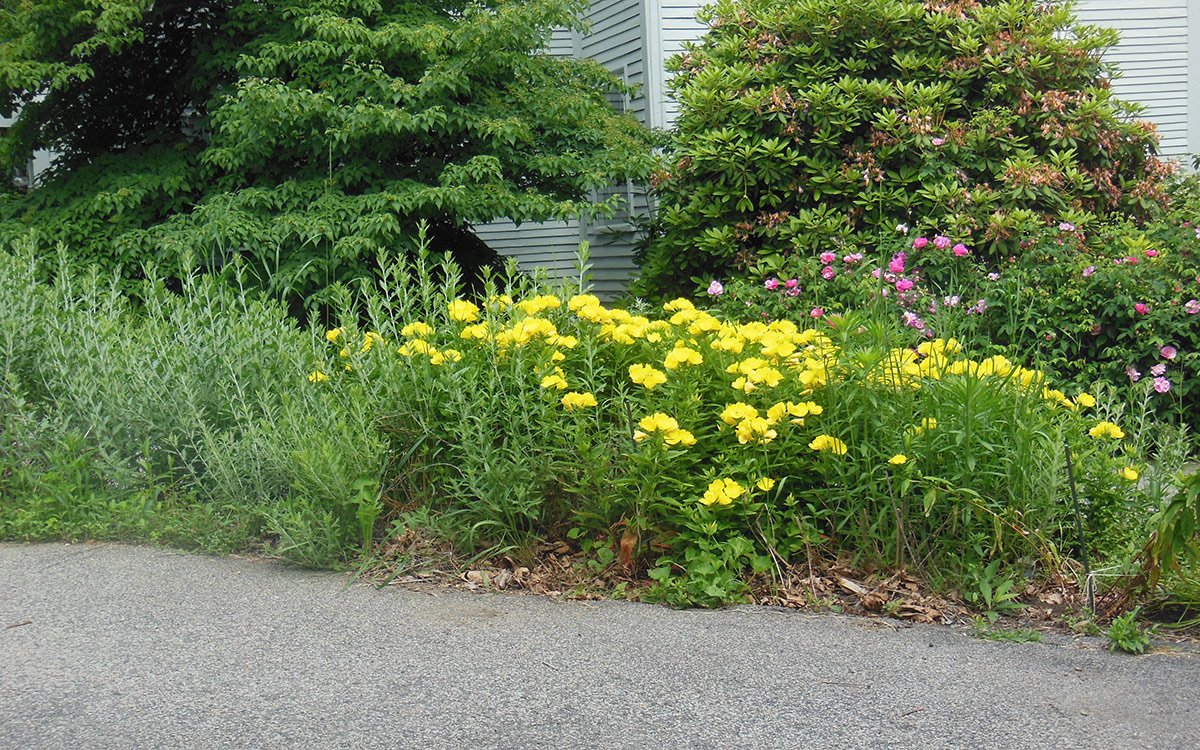 Lastly, bright yellow evening primroses (Oenothera biennis, Zone 3–9) growing in with Russian sage (Perovskia atriplicifolia, Zone 5–9) continues the stream of color past the bright Rosa Mundi hedge.
Lastly, bright yellow evening primroses (Oenothera biennis, Zone 3–9) growing in with Russian sage (Perovskia atriplicifolia, Zone 5–9) continues the stream of color past the bright Rosa Mundi hedge.
Thank you so much for taking the time to share these photos with us, Nancy! No matter how long the delay, it is always a delight to see your colorful beds and beautiful garden photography. However, I hope we don’t have to wait quite so long to see highlights from your spring and summer gardens this year!
Lastly, a reminder that we always need more garden photos to keep this blog going! Whether it’s photos of last year’s flowers, a snapshot of what is blooming right now, or anything in between, consider sharing photos of your plants and gardens with the blog. Follow the directions below to submit photos via email, or send me a DM on Instagram: @agirlherdogandtheroad.
We want to see YOUR garden!
Have photos to share? We’d love to see your garden, a particular collection of plants you love, or a wonderful garden you had the chance to visit!
To submit, send 5-10 photos to [email protected] along with some information about the plants in the pictures and where you took the photos. We’d love to hear where you are located, how long you’ve been gardening, successes you are proud of, failures you learned from, hopes for the future, favorite plants, or funny stories from your garden.
Have a mobile phone? Tag your photos on Facebook, Instagram or Twitter with #FineGardening!
Do you receive the GPOD by email yet? Sign up here.
Fine Gardening Recommended Products

ARS Telescoping Long Reach Pruner
Fine Gardening receives a commission for items purchased through links on this site, including Amazon Associates and other affiliate advertising programs.
Telescopes from 4 to 7′. Cut and Hold (160) Blades. Drop forged blades for unsurpassed long lasting sharpness. Lightweight, 2.3 lbs., for continued use. Perfectly balanced for easy pruning.
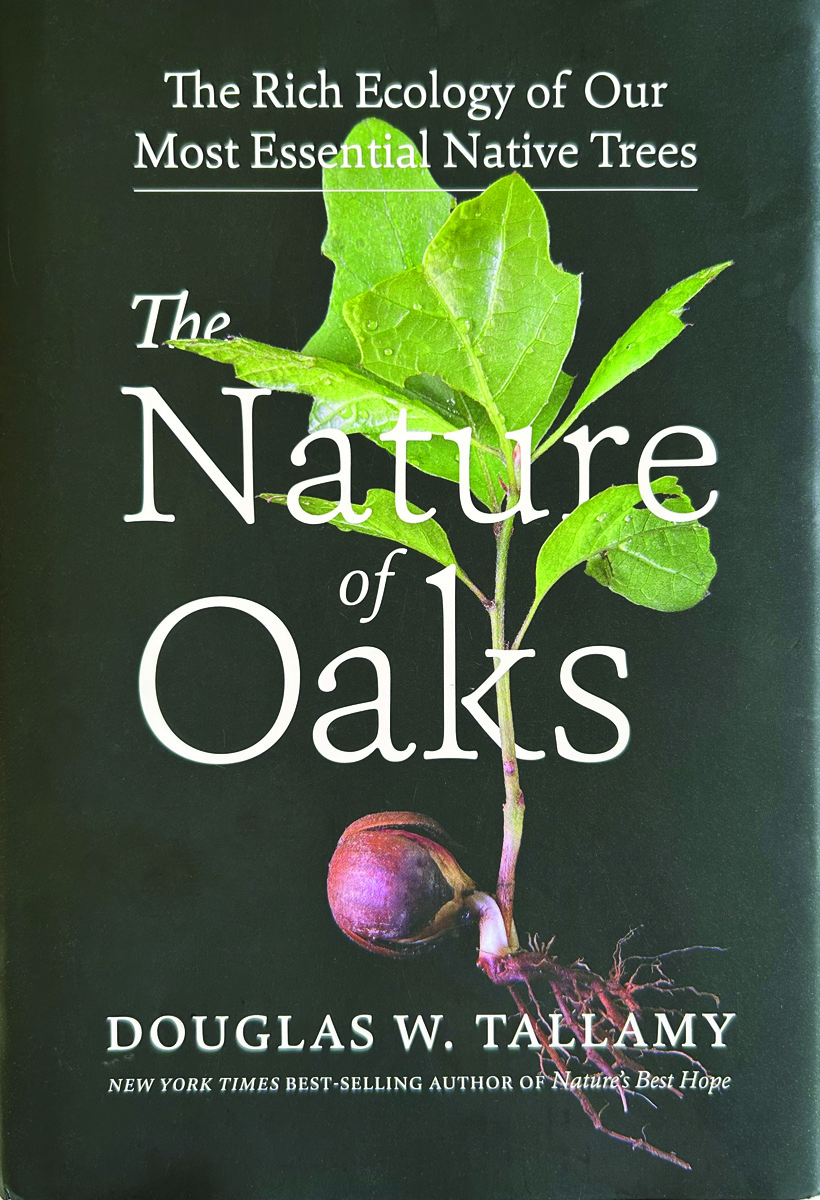
The Nature of Oaks: The Rich Ecology of Our Most Essential Native Trees
Fine Gardening receives a commission for items purchased through links on this site, including Amazon Associates and other affiliate advertising programs.
The Nature of Oaks reveals what is going on in oak trees month by month, highlighting the seasonal cycles of life, death, and renewal. From woodpeckers who collect and store hundreds of acorns for sustenance to the beauty of jewel caterpillars, Doug Tallamy illuminates and celebrates the wonders that occur right in our own backyards. He also shares practical advice about how to plant and care for an oak, along with information about the best oak species for your area.

DeWalt Variable-Speed Cordless Reciprocating Saw with 6-Piece Saw Blade Set
Fine Gardening receives a commission for items purchased through links on this site, including Amazon Associates and other affiliate advertising programs.
You can fit a variety of blades to this saw to cut fallen branches or prune larger limbs from trees in a pinch. It’s fast, tough, easy to use, and extremely versatile.
– 18.31 x 6.13 x 4 inches
– 1-1/8-inch stroke length
– Variable speed trigger with 0-3000 spm
– DW4856 Metal/Woodcutting Reciprocating Saw Blade Set, 6-Piece

